Banh Chung of ethnic minorities on Tet holiday in Cao Bang
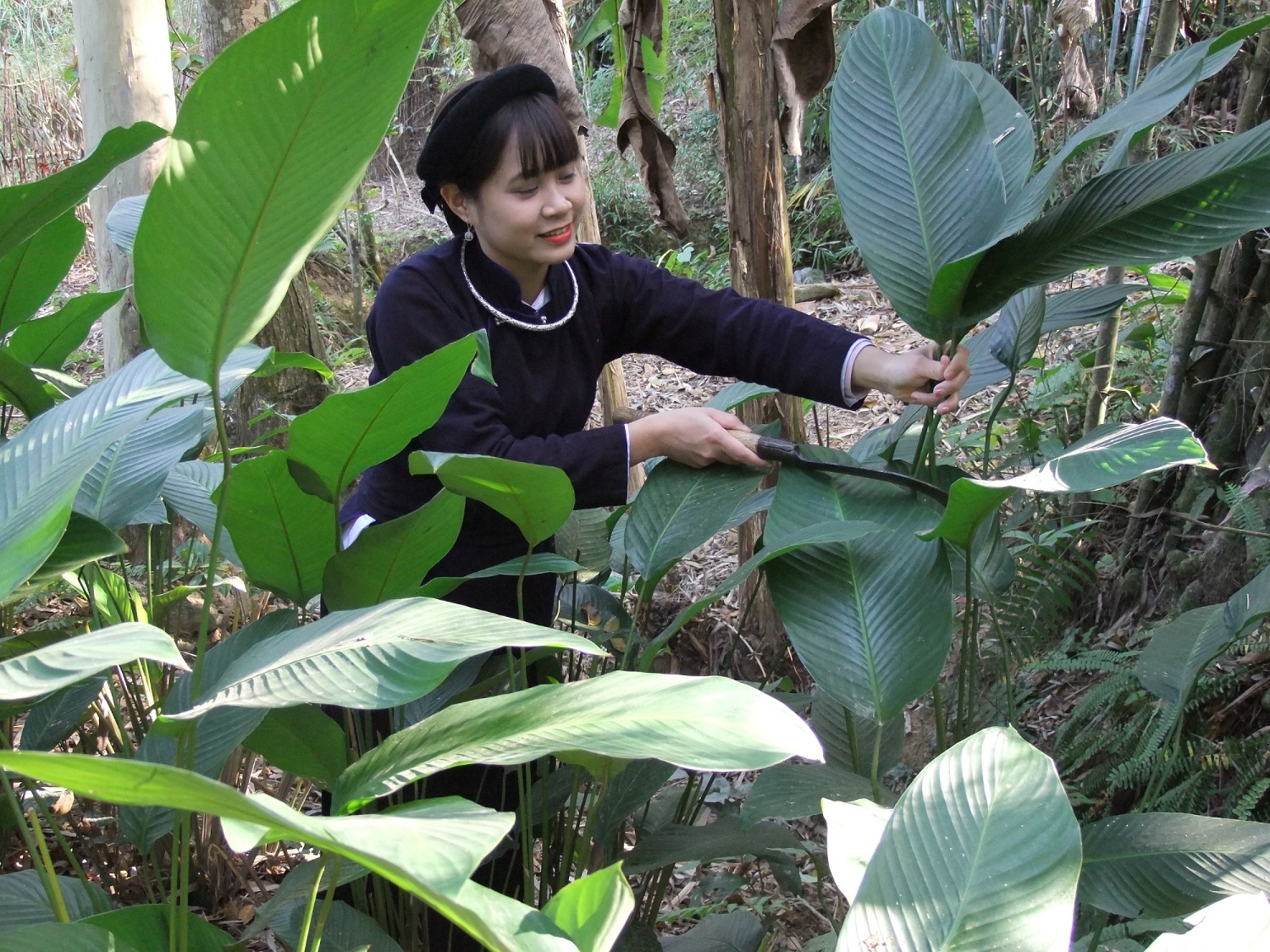
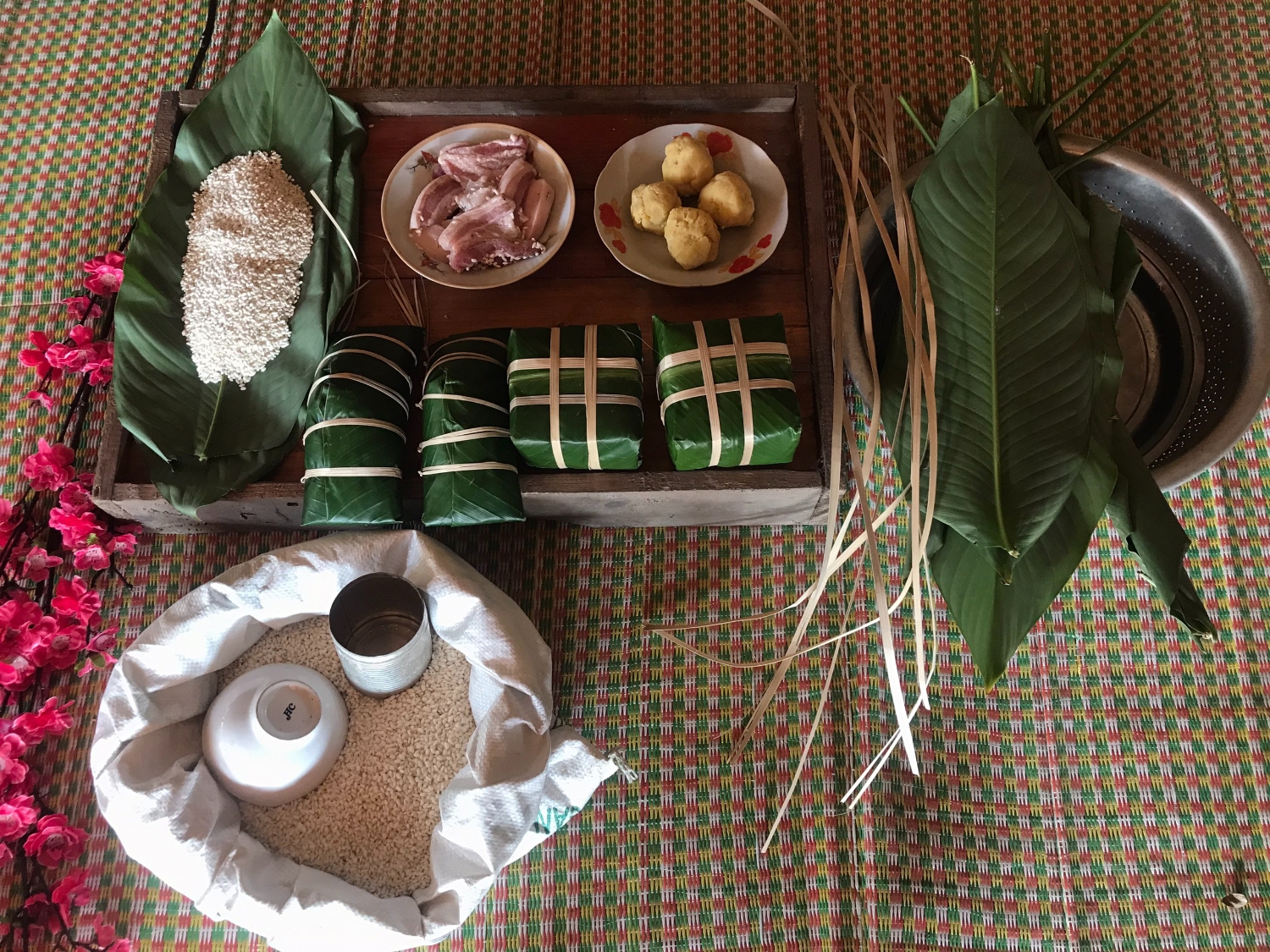
The ingredients of traditional Banh chung are the combination of the quintessential products of nature and human labor. After harvesting crops, round grain sticky rice will be chosen, tied in sheaves and hang up in the kitchen. The most delicious sticky rice in Cao Bang is Xuan Truong sticky rice (Bao Lac district), Bee sticky rice (Trung Khanh district), Pi Pat sticky rice (Hoa An district). An ingredient attached to Banh chung is dong leaves, which are used to wrap the cake. Traditional fillings of banh chung are mung bean and belly pork, especially, some families in Nam Cao, Nam Quang communes of Bao Lam district use cap instead of pork to make banh chung.


In addition to green banh chung, ethnic minorities in mountainous area of Cao Bang province also make black banh chung. This is a special creation with a unique flavor of the highlanders. There are some different ways to make black banh chung. For example, after removing all paddy out of the rice plants, the farmers burn sheaves of straw to ash, sieve and mix the clean ash with sticky grain rice. As for the Tay people in Bao Lam and Bao Lac, they use the ash from burning Chinese sumac trees (Rhus chinensis), or "My Piet" in the local language. They will choose the trees with lots of flowers and nuts, burn the trees into charcoal, and grind the charcoal into a fine powder. They then mix the charcoal powder with sticky rice, leave the mixture stay for a while so that the sticky rice turns into black color. In addition, in some districts such as Ha Quang, the local people burn nga hooc (Perilla frutescens) to ash. After darkening the rice, they wrap banh chung. After cooking process, the cakes will be black, delicious with the tree’s fragrant and can be kept for longer time than green banh chung.
Regarding the shape of banh chung, the local people wrap the cake in the shapes of square, humpback, or cylinder. After being well cooked from 12 to 14 hours, banh chung is very soft, glutinous and tasty.
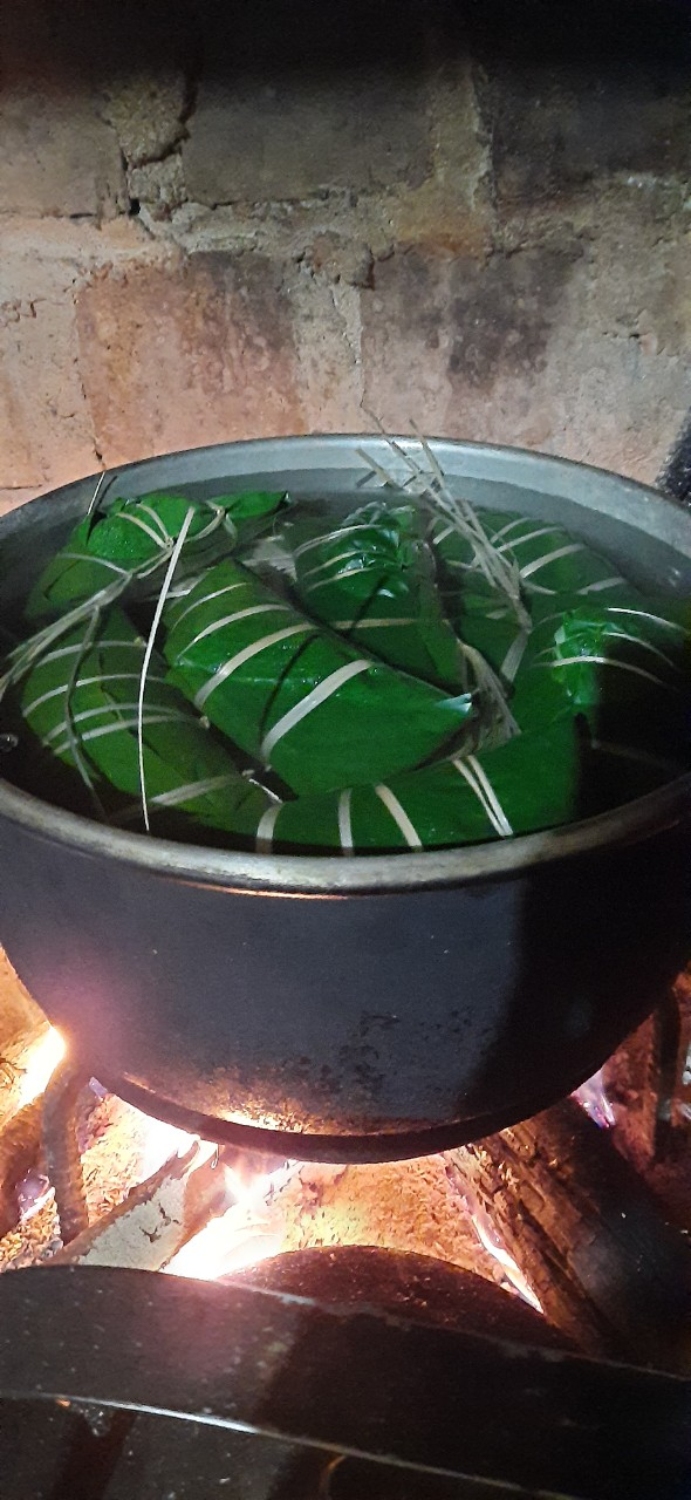
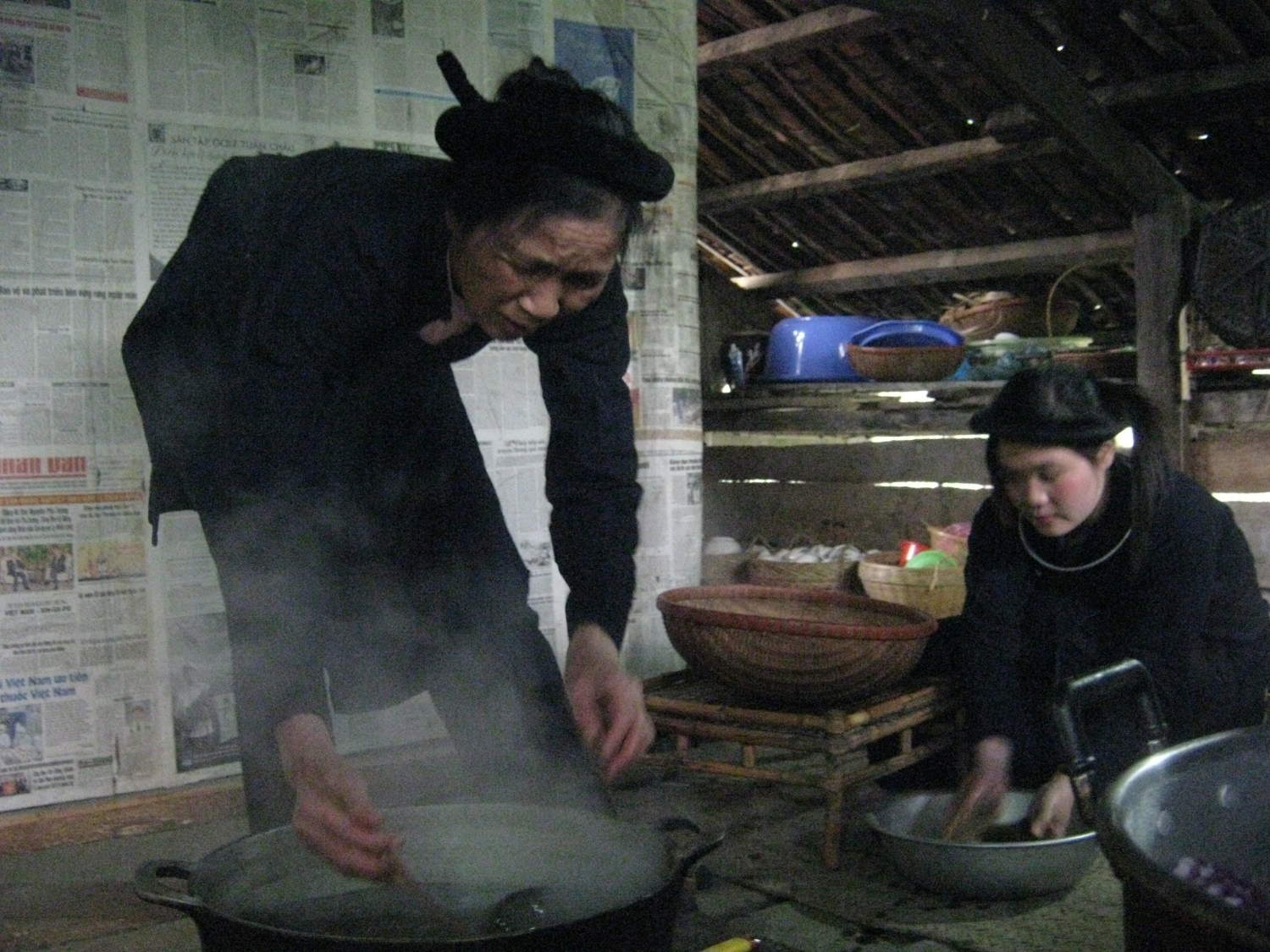
Banh chung conveys original traditional cultural values of the indigenous people. In the West of Cao Bang, Nung people call banh chung "Khau Tom", the cake in cylindrical shape is called "Peng Sli" or "Peng Tooc" in some places, and Dao people call it "Dua Peu", etc. For local people, banh chung is an offering to pay the homage and express deep gratitude to their ancestors and gods on Tet or Feast days. The cake is an irreplaceable dish of Tet banquet, especially, when the family members gather to make the cake, sit around the warm fire to wait for the holy New Year's Eve and to take delicious cakes out of the steaming stockpot, then open the first cake to lay on the ancestors’ alter, and enjoy tasty pieces of cake in the cozy family atmosphere.
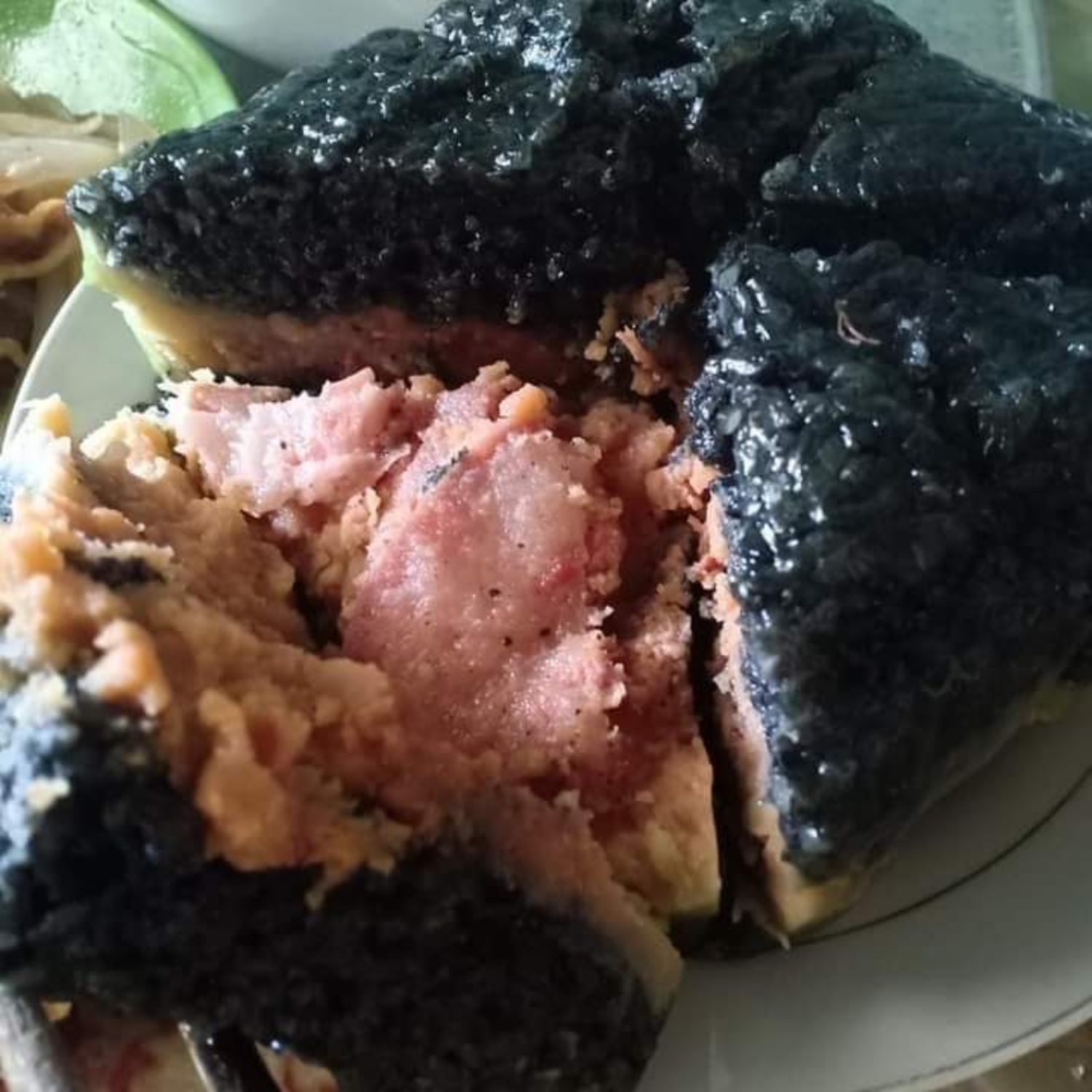
Banh chung is also associated with the unique conceptions of ethnic minorities. When wrapping banh chung, they will mark the first 12 cakes in order corresponding to 12 months of the year. Finishing the wrapping process, they drop the cakes into a large stockpot of water and observe the 12 marked cakes, which cake sinks first means it will rain a lot in the month corresponding to that cake.
The humpback shape cake with two tapered ends and cornered middle, symbolizing the image of a pregnant woman, is created to pray for a flourish new year; or it simply is the image of the ethnic people hunching over to do transplanting or work on the field. The image of the cake also goes into the Tay people's lullabies “Hush little baby, wait for mommy to catch bush-crickets on the rice field/ catch the 2-horn buffalo/ catch the deviated horn cow/ get the humpback Tooc cake”
Banh chung of Vietnamese in general and the ethnic minorities in Cao Bang in particular is the evidence of the Vietnamese deep gratitude towards ancestors as well as traditions, and contains the priceless cultural, historical values passed from generation to generation.
Source: Hoang Huyen
Reader Comments
Newer articles
Older articles


